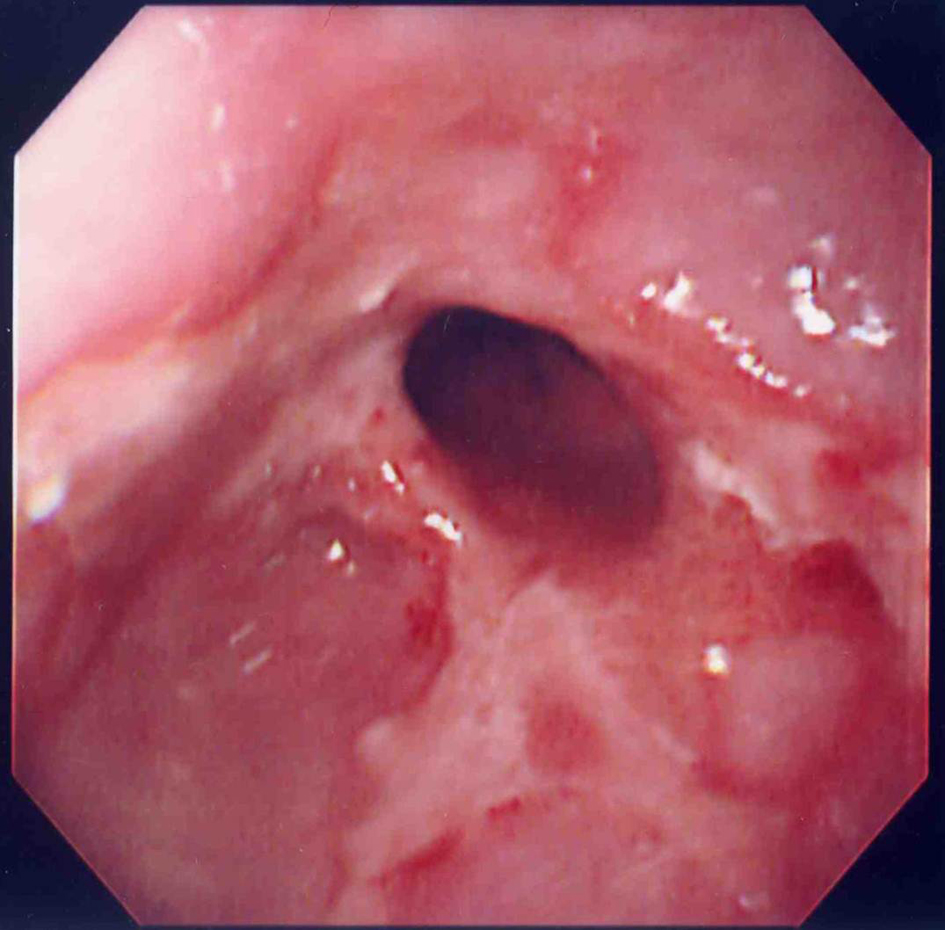| Journal of Clinical Medicine Research, ISSN 1918-3003 print, 1918-3011 online, Open Access |
| Article copyright, the authors; Journal compilation copyright, J Clin Med Res and Elmer Press Inc |
| Journal website http://www.jocmr.org |
Case Report
Volume 4, Number 5, October 2012, pages 349-350
Severe Erosive Esophagitis Developing After Gastric Ulcer Formation
Takatsugu Yamamotoa, b, Koichiro Abea, Hajime Anjikia, Taro Ishiia, Yasushi Kuyamaa
aDepartment of Internal Medicine, Teikyo University School of Medicine, Tokyo, Japan
bCorresponding author: Takatsugu Yamamoto, 2-11-1, Kaga, Itabashi-ku, 173-8605, Tokyo, Japan
Manuscript accepted for publication April 04, 2012
Short title: Severe Erosive Esophagitis Developing
doi: https://doi.org/10.4021/jocmr895w
| Abstract | ▴Top |
A 90-year-old woman visited to our institute due to postprandial obstructive sensation of the esophagus. She had suffered from ischemic heart disease and diabetes mellitus, and taken low-dose aspirin for prophylaxis. She also had a history of a large ulcer located on the upper gastric body at 81 years-old. Esophago-gastric junction was normal excepting mild hiatal hernia at that time. The esophagogastroduodenoscopy showed a lump of food at the lower esophagus with severe stricture and mucosal injury. Rabeprazole 20 mg per day was given, and both the inflammatory change and the symptoms improved after the prescription. A probable reason of the development is impaired gastroesophageal motility and acid regurgitation induced by gastric deformity caused after ulcer formation.
Keywords: Esophagitis; Peptic ulcer; Elderly
| Introduction | ▴Top |
The prevalence of reflux esophagitis increases in association with westernized diet and advanced aging society in Japan. However, it remains uncertain how esophagitis develops [1]. Here we report on a case of esophagitis appearing after 9 years.
| Case Report | ▴Top |
A 90-year-old woman visited to our institute due to postprandial obstructive sensation of the esophagus. She had suffered from ischemic heart disease and diabetes mellitus for over 30 years, and taken low-dose aspirin for prophylaxis. She also had a history of a large peptic ulcer located on the upper gastric body at 81-years old, and taken lansoprazole 15 mg per day since then (Fig. 1). Esophago-gastric junction was normal excepting mild hiatal hernia at that time (Fig. 2). The esophagogastroduodenoscopy showed a lump of food at the lower esophagus with severe stricture and mucosal injury (Fig. 3, 4). Gastric ulcer scar was also found without recurrence. Rabeprazole 20 mg per day was given, and both the inflammatory change and the symptoms improved after the prescription.
 Click for large image | Figure 1. The patient had a large gastric ulcer when she was 81 years old. |
| Discussion | ▴Top |
We described on the case with severe esophagitis developed 9 years after gastric ulcer formation. A probable reason of the disease is impaired gastroesophageal motility and acid regurgitation induced by gastric deformity. Because the course of developing esophagitis remains unknown, the present case gives us images that show how severe esophagitis develop.
| References | ▴Top |
- McDougall NI, Johnston BT, Collins JS, McFarland RJ, Love AH. Disease progression in gastro-oesophageal reflux disease as determined by repeat oesophageal pH monitoring and endoscopy 3 to 4.5 years after diagnosis. Eur J Gastroenterol Hepatol. 1997;9(12):1161-1167.
pubmed
This is an open-access article distributed under the terms of the Creative Commons Attribution License, which permits unrestricted use, distribution, and reproduction in any medium, provided the original work is properly cited.
Journal of Clinical Medicine Research is published by Elmer Press Inc.


